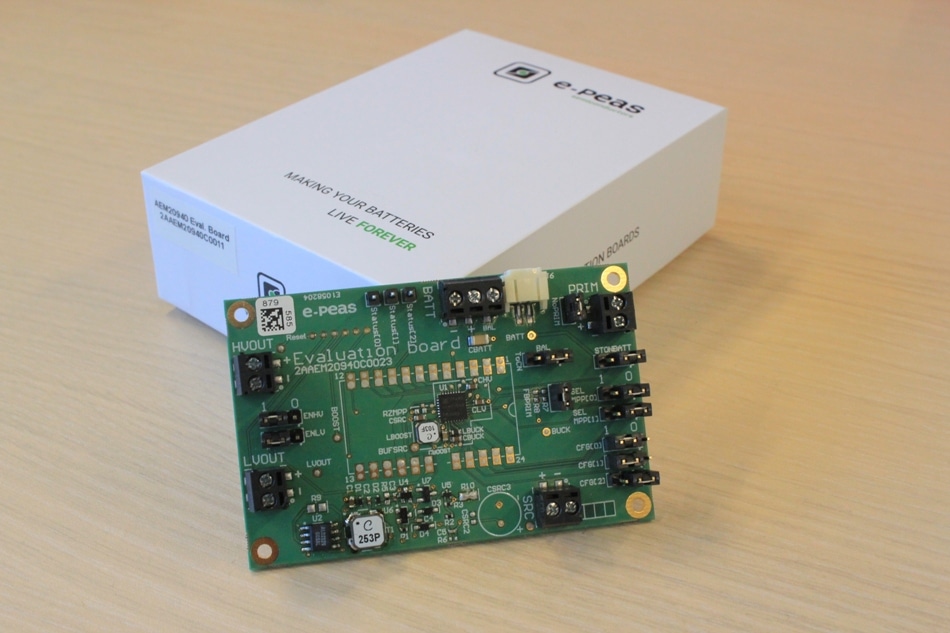e-peas has announced the introduction of a new power management IC specifically optimized for energy harvesting from thermal sources in wireless sensors application.
 AEM20940 Eval Board
AEM20940 Eval Board
Supplied in a space-saving 28-pin QFN package, the AEM20940 is a highly advanced device based on proprietary technology that is capable of extracting available input current up to levels of 110mA. Taking DC power from a connected thermal electric generator (TEG), it can supervise the storing of energy in a rechargeable element and simultaneously supply energy to the system via 2 different regulated voltages. This is done through its built-in low noise, high stability 1.2/1.8V and 2.5/3.3V LDO voltage regulators. The lower voltage can be employed for driving the system microcontroller, while the higher voltage is intended for the RF transceiver.
Through the AEM20940’s deployment, it will be possible to extend the system battery life or, in many cases, eliminate the primary power source from the system completely. By this any dependence on having to regularly replace batteries (which often has serious logistical challenges associated with it, as well as adding to the overall expense) can be removed. A key characteristic of the device is its ultra-low power start-up characteristics. It can achieve a cold start (with no stored energy available) from just a 100mV input voltage and 80µW input power with an external module. Sophisticated energy management functions enable fast supercapacitor charging and warn when stored energy reserves are running low.
“Having a thermal energy harvesting solution to add to our portfolio is a significant step forward for the company, as we look to establish ourselves as the leading IC manufacturer in the rapidly maturing energy harvesting sector, offering the most complete and innovative PMIC products,” explains Geoffroy Gosset, co-founder and CEO of e-peas. “It means that our clients will be able to design IoT systems that can efficiently extract energy from their surrounding environment whatever the available sources.”
The main target applications envisaged for the AEM20940 are in industrial process monitoring, HVAC and predictive maintenance. For more information on this device, please visit: https://e-peas.com/wp-content/uploads/2018/05/PB_AEM20940_REV1.1.pdf